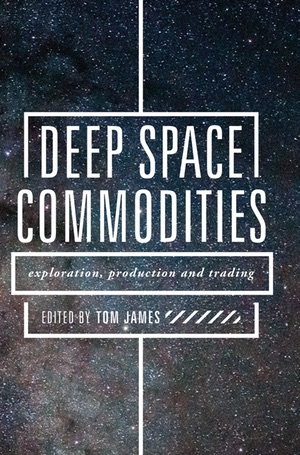Review: Deep Space Commoditiesby Jeff Foust
|
| There is surprisingly little in the book, though, on the business and economics of asteroid mining. |
That hasn’t deterred the hardcore asteroid mining enthusiasts, though. “Then 25 November 2015 happened—a turning point in the diary of the new space economy,” Tom James writes in the opening chapter of the new book Deep Space Commodities. That was the day that President Obama signed into law the Commercial Space Launch Competitiveness Act, whose provisions include language giving US companies the rights to resources they extract from celestial bodies. That bill addressed some of the regulatory uncertainty involving commercial asteroid mining.
“Earth, post-Space Act 2015, has already begun to change,” he argues in the book, using a common but inaccurate name for the law. “I have personally witnessed the first-hand impacts on my day to day work in the Earth-based Energy and Commodity industry thanks to the lowering of costs in access to space and space technology.” But that reduced cost of access to space, and related technologies like Earth observation, are not effects caused by the legislation, but rather trends in place for several years that are, at best, tangential to the law. And that act clearly has not been that enabling to asteroid mining companies, given the problems those companies have subsequently experienced.
Those problems aren’t brought up in the book, a collection of essays that includes several authored or co-authored by James. Some focus on more general commercial space issues, others on technology for resource extraction from asteroids. One chapter examines a specific mission concept, the Asteroid Impact and Deflection Assessment, which is intended to demonstrate technologies for planetary defense but which James argues can also offer insights for future mining missions.
There is surprisingly little, though, on the business and economics of asteroid mining. The book includes a table from a website called “Asterank” that attempts to quantify the value of certain near Earth asteroids and even the “estimated profit” from mining them, but there’s no rationale given in the book for how that profit—which in some cases is measured in the trillions of dollars—is calculated. If there really was a profit potential in the trillions for some asteroids, asteroid mining startups should have no problem raising funding. Instead, investors seem deterred, perhaps by the long time horizons, technical and other uncertainties, or doubts that mining is that profitable—or profitable at all.
| Given the realities of asteroid mining have yet to match up with rhetoric offered by companies several years ago, a more thorough, and skeptical, look at the subject is warranted. However, that is not provided in Deep Space Commodities. |
The book also suffers from internal contradictions and general sloppiness. Near the end of the first chapter, James discusses how water may be the most valuable early resource extracted from asteroids or the Moon. However, a later chapter James co-authors with Simon Roper includes a section titled “Asteroid Mining 101” whose four paragraphs focus as much on rare earth elements as on water. Another chapter by James and Roper is rife with typos and errors like “Mother Gaya,” “Expidition 53,” and “New Sheppard,” and also mentions the now-concluded Google Lunar X PRIZE in the present tense.
There are a few good chapters in the book. Michael Listner (a regular contributor to this publication) provides a detailed overview on the legal regime regarding space resources. British academic Bleddyn E. Bowen offers an essay on international politics and spaceflight, although it has little to do directly with the issue of space resources.
Despite the setbacks of current ventures, the idea of extracting space resources has not gone away, but the near-term focus appears to be more on the Moon given the new US space exploration policy and interest by other nations in lunar exploration. While the book includes a chapter on the “economic viability” of Mars settlement (written by Robert Zubrin), there’s less attention to lunar resources in the book. When it is mentioned, the book often references Shackleton Energy, a venture that proposed extracting lunar ice but appears to be either defunct or on an extended hiatus.
Given the realities of asteroid mining have yet to match up with rhetoric offered by companies several years ago, a more thorough, and skeptical, look at the subject is warranted. However, that is not provided in Deep Space Commodities, which appears to be as optimistic about the potential for asteroid mining as ever. Perhaps one day the technical, financial, and regulatory factors will finally align for companies wanting to turn asteroid mining into a viable, profitable business. For now, though, it remains, at best, an aspiration.
Note: we are temporarily moderating all comments subcommitted to deal with a surge in spam.
